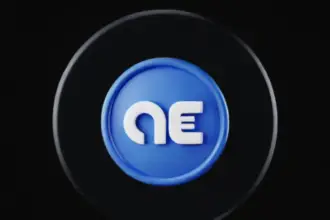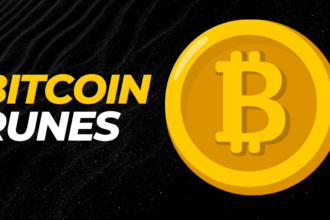Blockchain technology is revolutionizing the digital world and one of the platforms that has made great strides in this area is Solana. Solana is a powerful blockchain platform designed to provide fast, secure and scalable solutions for decentralized applications (dApps) and cryptocurrencies. In this article, we’ll take a closer look at what Solana is, its key features, and its potential impact on the blockchain industry.

Understanding Solana: Breaking the Basics At its core,
Solana is an open-source decentralized blockchain platform that aims to overcome the scalability limitations of other blockchain networks. It is designed to help developers create decentralized applications that can handle heavy usage without sacrificing speed or security.
Solana’s Unique Architecture and Features
1. Proof of History (PoH)
Solana introduces a breakthrough concept called Proof of History (PoH) that provides a historical record of every transaction on the network. . PoH acts as an auditable time source, ensuring the order and validity of transactions without relying on computing resources. This innovative approach enables Solana to achieve high throughput and short transaction confirmation times.
2. Tower BFT Consensus
Solana uses the Tower BFT (Byzantine Fault Tolerance) consensus mechanism to validate transactions and secure the network. This consensus algorithm enables fast finality, allowing Solana to process thousands of transactions per second. Tower BFT ensures network integrity and decentralization by preventing malicious actors from compromising the consensus process.
3. Gulf Stream
Another important feature of Solana is Gulf Stream, a transaction processing mechanism that optimizes the use of network resources. Gulf Stream splits the transaction verification process into smaller parallel tasks to maximize efficiency and reduce bottlenecks. This approach greatly increases the scalability of the Solana blockchain.
4. Smart Contracts and Tokenization
Solana supports smart contracts, developers can build decentralized applications using popular programming languages like Rust, C, C++. Additionally, Solana offers a robust tokenization ecosystem that enables the creation and management of various digital assets and tokens on the platform.
Solana Potential Impact
Solana’s unique combination of innovative features makes it a strong contender in the blockchain space. With high throughput, low transaction costs, and a developer-friendly infrastructure, Solana has the potential to revolutionize many industries.
1. DeFi and Finance
Solana is an ideal platform for decentralized finance (DeFi) applications due to its fast transaction processing and low fees. The scalability and security provided by Solana enable efficient lending and borrowing, decentralized exchanges, and other financial services.
2. Games and NFTs
Blockchain integration is booming in the gaming industry, and Solana’s capabilities can power the next generation of blockchain-based games. Additionally, Solana’s support for non-fungible tokens (NFTs) opens up opportunities for digital art, collectibles, and tokenized assets.
3. Web 3.0 Applications
As Web 3.0 evolves, Solana’s scalable infrastructure can meet the growing demand for distributed applications. Solana’s high performance and compatibility with popular programming languages provide developers with a seamless environment for developing innovative solutions for the distributed web.
In Conclusion
Solana is a revolutionary blockchain platform that addresses the challenges of scalability and performance. With its unique architecture, innovative features like Proof of History and Tower BFT consensus, and potential applications across various industries, Solana has garnered significant attention in the blockchain community. As the technology continues to mature, Solana has the potential to shape the future of decentralized applications and redefine the blockchain landscape.
Frequently Asked Questions (FAQs)
How does Solana achieve its high transaction throughput?
Solana achieves high transaction throughput through its innovative architecture, which combines Proof of History (PoH), Tower BFT consensus, Gulf Stream, and Sealevel. These technologies work together to enable fast and parallel processing of transactions.
Can Solana be used for decentralized finance (DeFi) applications?
Yes, Solana is well-suited for decentralized finance applications. Its fast confirmation times and low transaction fees make it ideal for various DeFi use cases, such as decentralized exchanges, lending platforms, and yield farming.
Is Solana secure?
Solana is designed with security in mind. Its consensus algorithm, Tower BFT, ensures Byzantine Fault Tolerance, making it resistant to malicious attacks. Additionally, Solana has undergone rigorous testing and audits to ensure its security and robustness.
How does Solana compare to other blockchain platforms like Ethereum?
Solana offers higher scalability and faster transaction confirmation times compared to Ethereum. While Ethereum currently faces congestion and high gas fees, Solana's architecture allows it to handle a much larger number of transactions per second with minimal fees.
What is the SOL token used for in the Solana ecosystem?
The SOL token is the native cryptocurrency of the Solana network. It is used for transaction fees, staking, and participating in governance decisions within the Solana ecosystem.











